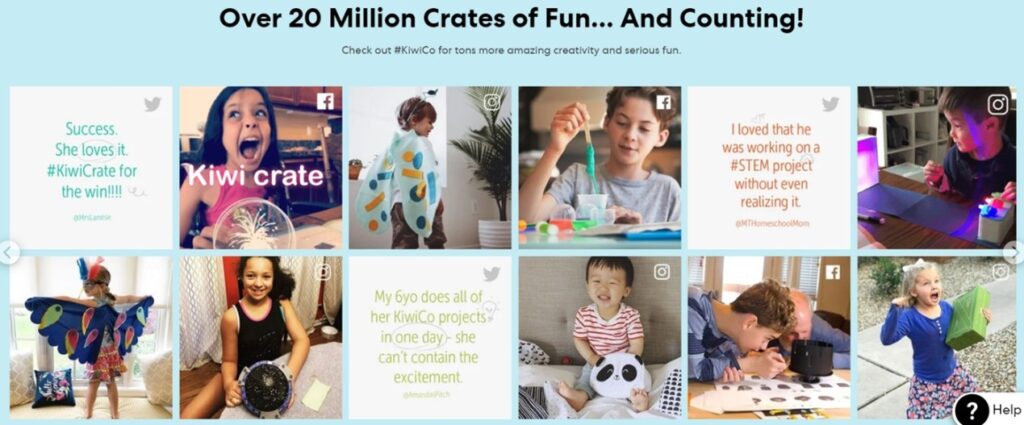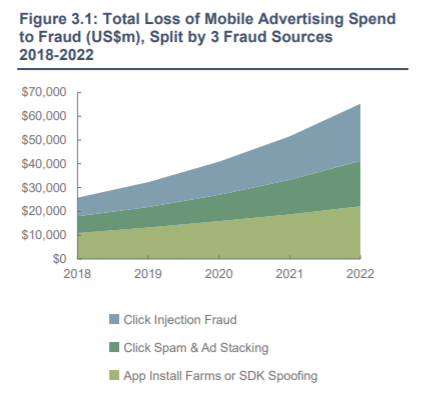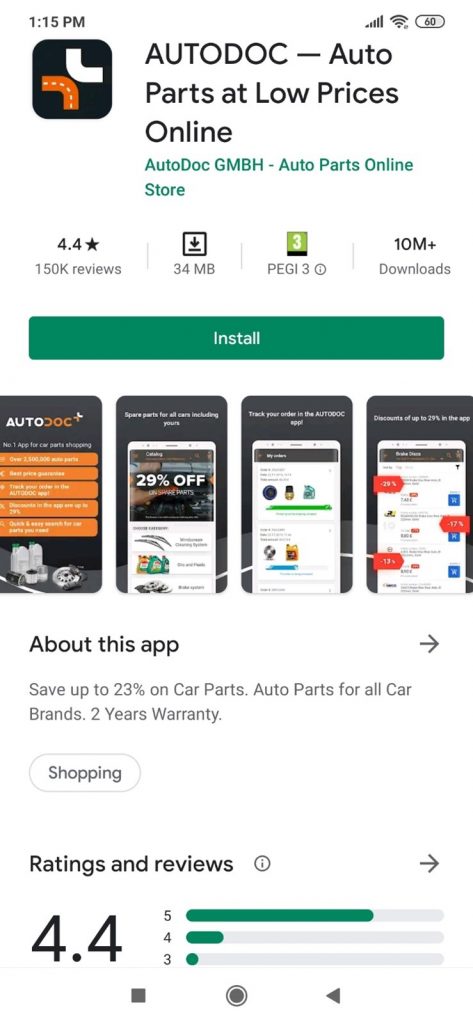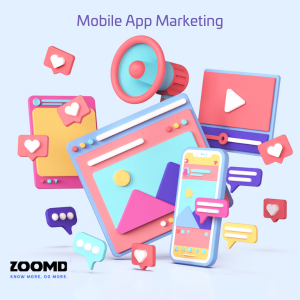July 13, 2021
As a solopreneur or a small team trying to make a difference in the world – while paying bills and dreaming big – you’ve invested so much into an idea that you believe is brilliant, that people will connect with. You know they’ll find value in your app but as you try to reach more customers and grow, you end up getting pulled in a million different directions, trying to maximize operations and results across as many user acquisition platforms as you can. You end up wasting time and money that, as a small business, you can’t afford to lose.
We know what that feels like because we’ve been there- starting a company from scratch too and managing a growing number of user acquisition accounts manually, stretching ourselves across platforms and KPIs (key performance indicators). The good news we learned along the way is that was that it doesn’t have to be this way. You can increase advertising efficiency and get more customers to download your app in a profitable way. And you can do it even on a small budget with a small team – or on your own. You can grow your app step by step, and make scaling your business easier the more you grow. In this net article, we’ll present 9 realistic steps you can take to do just that. Start with one of them, then gradually combine as many of them as possible to reach the results you are after.
How to increase App installs
-
Focus Your Research Efforts on Your Most Ideal Customers (and the Tools that Help You Find Them)
The number one step to maximize a small ad budget is to use it to target the right app customers, and to communicate with these people in a way they can relate to.
Take M.M.LaFleur, for example. It’s a retailer that defines its fashion as “powerful pieces to wear as you’re out fighting for the things you believe in.”
The company was “built on a core belief: When women succeed in the workplace, the world becomes a better place,” its website explains. The company’s “mission is to take the work out of dressing for work,” so that women can “harness the power of self-representation” and focus on the issues that matter to them.
That said, the brand has been known to clarify that “we take our work – but never ourselves – seriously.” Therefore, when it comes time to craft messages that speak to this audience and lead to conversion, M.M.LauFleur’s team easily navigates through the full customer experience.
If peek at the company’s Instagram feed, you’ll learn how this brand naturally communicates with its audience, and then think about how you can implement it yourself when you set to advertise your own app, based on the core idea and values of it.
Among the content, M.M.LauFleur invests in are simple fashion tips, like which colors go with which. You can find posts about gender equality. And you can find content about workplace life – anything from what your “out of office” messages really mean to whether it’s OK to cry at work.
This understanding of its target audience makes advertising much more efficient. M.M.LaFleur can focus its budget only on women who fit its target audience, saving itself a lot of money and time.
And you can do the same.
Before you start your advertising campaign, get to know your app’s ideal customer.
In some occasions, knowing demographic information can help. If your app is for home buyers, for example, you want to understand your customer’s budget and housing needs. A professional looking for a condo in the hottest neighborhood in town, overlooking the skyline, is different than a family that needs a budget home in a good school district, or an older citizen looking for comfort.
Even if your app can serve all of them, each ad campaign will be more successful if it speaks to one customer sector at a time.
Either way, in most cases, it’s recommended to dig deeper than demographics. But don’t worry if you can’t afford a research firm to reveal the specific characteristics of your app’s target audience. If you’re on a budget, the internet is your best friend. There’s a wealth of information right here, at your fingertips.
Research and get to understand your ideal app customers’ underlying desires, challenges, fears and aspirations. Try to figure out how they define and phrase things.
Spend some time following hashtags and social media group discussions, and reading-related book reviews and popular blog or YouTube channel comments.
Gradually, you’ll gain a clearer understanding of their voice. It’ll be like hearing them speak.
You could also participate in discussions yourself, ask questions, and leave some blind spots behind.
It will help you target the right people for your app, and write ad copy they can connect to.
Simultaneously, choose an advertising partner that has access to a larger, deeper volume of data. Platforms that connect a wide range of media sources are usually better at targeting specific audiences accurately and cost-effectively because their algorithms can cross-reference and validate data way more efficiently than single-source platforms.
But more on that a little later. Let’s first make sure you’ve got the goal of your campaign clear.
- Target Actual Action Taking, Not Just Brand Awareness
Once you understand who your ideal customer is and what she needs from your app, it’s time to clarify why you want to reach out to her with your campaign.
One very valid reason is to increase brand awareness, recall and preference. After all, it takes time to get people to know your app, remember it and trust it enough to buy from it. Building a long-lasting relationship with your ideal customer takes a long time, and it’s important to keep nurture it.
This way, when your customer is ready to buy, your app will be the one she wants to buy from.
However, if you have a small budget and a small team, chances are you need real business results as soon as possible.
The sooner you’ll convert prospective customers into actual customers, the sooner you’ll have the budget you really need in order to grow your app, and run campaigns like the bigger companies in your space.
At the risk of a shameless plug, that’s exactly why we decided to offer a pay-per-performance model in our advertising platform. You get guaranteed app installations.
No matter how wide your campaign spreads across our 600+ global mobile user resources, the guarantee still stands. And it’s the same if you prefer to narrow down the reach to premium social media networks, like Facebook and TikTok. If you don’t get an installation, you don’t pay, because we want to level the playing field and see more small businesses succeed.
Of course, to get app installations, it’s important that you build trust with your ideal customers.
- Build Trust Quickly
Have you generated results for your customers? Do you have customers your prospective customers can recognize, like celebrities or influencers? Has your app been featured on large media sources?
Do you have lots and lots and lots of customers?
Incorporating these little nuggets of information in your ads and landing pages instantly boosts trust. It differentiates your app from similar apps, especially if your prospective customer is new to your brand.
Suddenly, this isn’t just another app that’s trying to sell a product or service. Instead, it’s an app that helped a favorite celebrity – or a woman just like her, or 10,000 women just like her – create the life she, too, wants.
Check it out in action. KiwiCo, which provides science and art kits for kids, has the number of products it has sold, customer testimonials, and photos of kids using its products in one spot.

Source: KiwiCo
Now, you don’t necessarily need to pack so much social proof into one spot. You can spread different trust anchors throughout your campaign, or just highlight the one aspect that will matter to your customers most.
Then, stay consistent.
- Create Brand Continuity Across Touchpoints
Have you seen this meme on social media?
Celebrities, everyday people and organizations posted photos that represented them differently on different platforms – LinkedIn, Facebook, Instagram and Tinder.
Meme or not, we all do that. We all show up more professionally on LinkedIn than we do on dating apps (well, most of us anyway). We all have personality facets that shine with certain friends, siblings or coworkers, and other facets that shine elsewhere.
Your app’s brand personality might be the same.
It might be more humorous in some of your communication, and more compassionate when that’s a better fit. But at the core, its essence must remain consistent across all channels.
Think of it this way:
First, your app’s brand needs to feel like a human being for people to connect with it emotionally. If they connect with it emotionally, they’re more likely to buy according to fMRI studies. “Functional magnetic resonance imaging (fMRI) shows that when evaluating brands, consumers primarily use emotions (personal feelings and experiences), rather than information (brand attributes, features and facts),” reported Psychology Today.
Therefore, you want to give your app a brand personality, that can provide an emotional experience for customers.
Second, remember that your app basically interacts with one person – your ideal customer. Whatever personality aspects that interaction sparkles, it needs to sparkle them across all channels, just like it would with that one friend or family member.
Even more so during a campaign.
Here’s why:
When your ideal customer connects with an ad enough to click on it, you want to make sure that experience – that feeling – continues through your landing pages and into your app.
That’s what got her to click. That’s what will get her to download your app, and even to buy.
And if the experience keeps proving itself, that’s what will turn her into an advocate who brings more ideal customers to your app.
- Unify Data & Scale Your Efficiency the Simple Way
As you can see, it’s important to unify your app’s message and how it communicates. But to take your efficiency to the next level, also unify the platforms you operate for your ad campaigns.
In other words, instead of managing campaigns across multiple ad networks, choose a platform that gives you access to all of them on one dashboard.
Preferably, the platform will do more than unify your channels. It will also unify your data.
Here’s how this helps you get more for every dollar you spend, so you can spend less money to get the same (or better) results:
- It saves you time and workforce- If you’ve found yourself amazed at how long it takes to build one campaign (on either media source) or process invoices for all your vendors, you’re not alone. As marketers who built our company from scratch, we’ve been there too. Managing user acquisition campaigns on multiple advertising channels takes time. And it’s not just the administrative stuff. You need to learn how to optimize each platform, track progress, make changes, track progress again, check each of the creatives, make changes… Transitioning to one platform makes this process much easier and faster.
- It increases conversions for less money- Getting data from one source is great. Unifying data from over 600+ sources like we do here at Zoomd, including all the hot social channels (did someone say TikTok?) helps us and our clients make much more strategic decisions, which end up converting more customers for less money. Just the ability to compare apples to apples (instead of impressions generated from one ad network compared to installations generated from another network) is helpful. When you add the predictive algorithm that knows how to buy ad inventory efficiently… We just sleep better at night.
- Leverage Predictions
The beauty of artificial intelligence is that it takes all the smarts we have as humans, and scales it to levels we might not be able to reach even if we dedicated our entire career to learning one topic.
Artificial intelligence algorithms can study massive amounts of information at pretty enviable speed, then make smart, data-based decisions, while correctly predicting results.
If you have a small budget, it’s especially critical that you choose an ad platform that utilizes AI. You’ll be able to get more customers for your app on that budget. And yes, you can totally access this type of technology even with a small budget [link to site].
As a bonus, it might also make it easier to differentiate humans from bots.
- Pay and Get Real Users, Not Only Downloads
21.3% of iOS and 26.9% of Android app installs are fraudulent, according to Business of Apps.
That’s more or less every fourth or fifth download you get. And it seems to be a profitable market for scammers. “The WFA predicts ad fraud will become the biggest market for organized crime by 2025, worth $50 billion,” added Business of Apps. But it doesn’t mean you’re doomed to waste your money on scammers.

Source: TrafficGuard via Business of Apps
If you’re building a small business with a small budget, this is just another key element to compare between ad platforms: How much fraud protection do they provide? How do they reduce your risk of encountering fraud?
The math is simple: The less you pay for bots to view your content and fake-download your app, the more budget you have left to pay for actual humans who download your app and make actual purchases with actual money.
- Remember to Invest in Organic Growth
For a small budget to make a big splash, take advantage of zero costs strategies right in the app store. These strategies are not only known for their effectiveness, but they get the app store to do some of the marketing heavy liftings for you.
Make Your App Easy to Find in the AppStore
App stores have their own in-store search engine, just like Google. It’s important to invest in app store optimization (ASO) to give your app a chance to rank high when someone searches for your type of app. Ideally, you want your app to be the first or second one a customer sees in search.
Conduct keyword research, and choose the most relevant keywords you’re most likely to rank for. Then, use it in your description and title. You’ll want to emphasize your main keyword more than once in the app’s description, but don’t make it sound like it was written by a bot.
Let the description “sit” for a bit after your write it. Walk away and do something else. Then, edit it until it feels like the keyword has integrated seamlessly into your copy.
Make Your App Engaging from First Glance
Making your description human-friendly is a big part of a good first impression. Use your customer research to phrase it as closly to how your ideal customer would phrase it. It will help her connect emotionally and feel like you get her.
For an even faster connection, invest in high-quality images and videos that convey the experience she’ll get to enjoy once she downloads your app.
Remember that customers might be checking out your app in a public place or late at night, so your video needs to convey the app’s experience even without sound. You could add captions to bridge this gap.

Screen capture of Autodoc app on the Playstore
Source: AUTODOC, via Google Play
How to market a mobile App? Make Your App Trustworthy
Nothing we ever say about our app will be as trustworthy as what a fellow customer says. Therefore, do your best to get reviews for your app. You could give in-app rewards, push notifications to power users, or approach people one on one if you see them giving you a shoutout on social media.
Just as importantly, respond to reviews in the app store. Especially if you get a negative review. Prospective customers who will see how compassionate and helpful you were when something went wrong will likely find it easier to give you a chance.
- Think Big to Grow Big
As a small business, you have less time, workforce and budget, and it’s often perceived as a negative thing. But while it feels harder now, it almost puts you in a spot where you have to think strategically in order to generate results that will keep the lights on and that will, gradually, help your app grow.
It’s a great way to build a strong foundation. The more you follow the guidelines we shared in this ebook, the greater return you’ll get for the budget you invest in your app, and the easier your journey will become.
Here at Zoomd, we’re committed to level the playing field for you. Our AI-based, predictive ad platform is available to you with a few clicks of a button. If you have $200 to invest in your campaign, you get access to the same pay-for-performance model our big brand clients – including AliExpress, SheIn, eToro and NordVPN – get.
And yes, that means instant access to 600+ global mobile media sources, including premium social networks, like Google, Facebook, TikTok and Snap, and an added fraud detection layer. If you don’t get actual app downloads by actual humans, you don’t pay.
When you’re ready to zoom into growth, we’re here for you.



